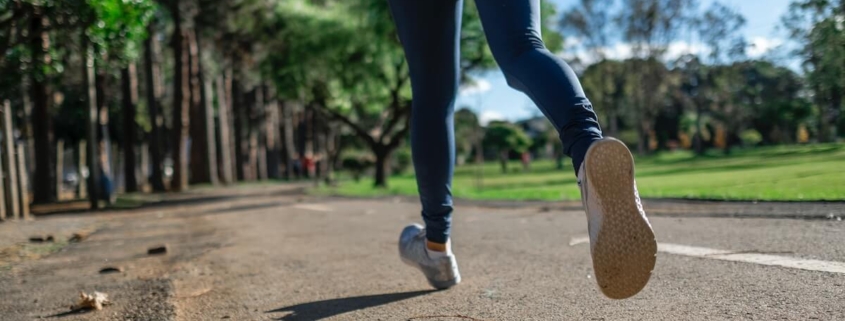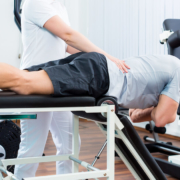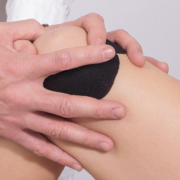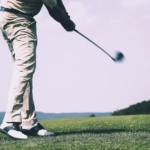Runner’s Knee and Other Common Running Injuries: Know the Signs
Few things slow you down more than pain and discomfort from runner’s knee or other running injuries, and flare-ups can occur at the worst possible times. It’s common to ignore and push through the early signs that something isn’t quite right until the pain or interruption in mobility becomes impossible to ignore. To avoid compounding injuries, you need to know the difference between discomfort that can be safe to train through versus pain that indicates injury, warranting further investigation. Here’s a list of the early signs and symptoms of runner’s knee and other common running-related injuries to watch out for.
First, Allow Us to Explain What Runner’s Knee Is
Runner’s knee, otherwise known as patellofemoral pain syndrome, refers to various conditions that cause pain in and around the knee cap (aka your patella). Knees are especially prone to overuse and strain injuries due to repetitive motion and wear and tear to the joint and surrounding tendons. Have you ever noticed knee pain or swelling after starting a new sport that requires sudden bursts of force, jarring stops, or rapid changes in direction? During these activities, the knee joint and surrounding muscles and tendons undergo repetitive flexion and extension.
Other conditions such as flat feet, misalignment of the knee joint, and suboptimal gait and movement patterns can contribute to one’s tendency towards common running injuries, including runner’s knee, shin splints, nerve pain with sciatica, plantar fasciitis and
Runner’s Knee Signs & Symptoms
- A dull, aching, or throbbing pain that radiates around the knee cap
- Pain in the back of the knee where the thigh connects to the patella
- Pain that comes on suddenly or worsens during repetitive movements that flex the knees (e.g., running, cycling, climbing stairs, squatting, or kneeling)
- Pain after periods of sitting or kneeling
- Pain in and around knee when walking downstairs or downhill
- Tenderness on and around the kneecap
- Clicking or grinding sensation in knee joint
- Swelling and tightness, or reduction in mobility of the knee
Contributing Factors
- Obesity or sudden weight gain
- Pushing yourself during a new activity, or when returning to an activity or range of motion you haven’t performed in a long time
- Failing to warm the muscles up and stretch before strenuous activity
- Incorrect form during exercise
- Repetitive strain on knee cap/patella (e.g., kneeling, cycling, squatting)
- Activities that involve overuse of the knee joint (e.g., powerlifting, football, skiing, etc.).
- Sudden impact during activity (e.g., bodychecks, foot slippage on uneven terrain, falls, and wipeouts)
- Direct trauma or injury to the knee
- Fallen arches, high-arches, over-pronation, and other gait issues
- Imbalanced or unconditioned leg muscles (weakness or tightness of quadriceps).
- Occupational injury
- Arthritis and joint inflammation
- Overstretching the tendons and muscles surrounding the knee
- Knee joint misalignment
- Incorrect footwear for the activity
- Running on hard surfaces such as concrete and asphalt
Other Common Running Injuries
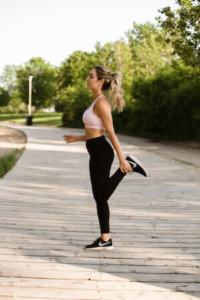 Achilles tendinitis: Pain and stiffness in back of foot (along Achilles tendon) where ankle attaches to heel. Achilles tendinitis can occur due to repeated strain on the tendon during activities that require a lot of ankle flexion (running, squatting, etc.). Muscle imbalances and tight calf muscles can exasperate it.
Achilles tendinitis: Pain and stiffness in back of foot (along Achilles tendon) where ankle attaches to heel. Achilles tendinitis can occur due to repeated strain on the tendon during activities that require a lot of ankle flexion (running, squatting, etc.). Muscle imbalances and tight calf muscles can exasperate it.
IT band syndrome: Pain is often felt along the outermost part of the knee and outer thigh. You can learn more about the signs and symptoms of IT band syndrome here.
Shin splints: Pain is felt along the shin bone of the lower leg and can be caused by a sudden increase in activity volume or duration.
Hamstring, glute, and ankle injuries: This can include muscle pulls, tears, strains and sprains, or pain due to tightness in the hamstrings, calves, or Achilles tendon.
Plantar fasciitis: Pain is felt in the heel and arch of the foot and typically worsens when the toes and foot are stretched upwards towards the shin and during the morning after strenuous activity. You can learn more about the signs and symptoms of plantar fasciitis here.
Stress fractures: Pain can be sharp or aching. Pain from stress fractures can sometimes be felt during activity and rest and is often accompanied by swelling. For runners, stress fractures most commonly affect the shins or feet and can be caused by overuse, sudden increases in activity volume and intensity, or direct impact from falls.
Nerve pain with sciatica: A sharp, shooting, burning, or pinching pain can run from the lower back or hip area down through the back of the thigh and calves. When runners experience sciatica pain, it’s sometimes the result of tight or inflamed glute muscles placing pressure on the sciatic nerve. You can learn more about the signs and symptoms of nerve pain with sciatica here.
Hip pain: Commonly associated with tendinitis due to repetitive strain of the muscles and tendons surrounding joints. Burning and aching Hip pain can also be caused by bursitis, which results from muscle overuse. More serious causes of hip pain—especially if the pain is accompanied by clicking or grinding sensation indicated cartilage tears. Muscle imbalances, gait issues, running on hard surfaces, and improper or worn-out footwear can also contribute to hip and knee pain.
Effective Treatments for Runner’s Knee and Other Running Injuries
Regardless of what hurts and why, the most important thing to do is listen to your body’s signs that something is wrong. Pain indicates it time to pause, give your body time to rest, and consider having the pain assessed by a professional, especially if it returns. Ignoring pain can lead to more significant problems, while addressing the cause of pain early on can prevent recurrence and injury.
But First, RICE
At the first indication of pain and swelling, follow the RICE method to help alleviate pain, swelling and further injury:
Rest: Immediately stop the activity to prevent further damage
Ice: If swelling is present, apply a cold pack in 10-20 minute increments (wrap cold pack in a towel to avoid causing ice burns to skin)
Compression: Painful joints can be carefully wrapped in a compression bandage to help with pain and swelling. Ensure you don’t wrap the area too tightly! Numbness, coldness, a change in colour, or swelling in the area below the wrap indicates your bandage is too tight, negatively affecting circulation. Compression should not be used over broken skin, while sleeping, or by people with diabetes or compromised arterial circulation without direction from a physician or health practitioner.
Elevation: To help reduce swelling, use pillows to elevate the affected limb above the level of your heart.
Pain and swelling that returns or persists after adequate rest, ice, compression and elevation, should be checked out by a practitioner to determine the cause and proper treatment.
Determining the best treatment for runner’s knee and other running injuries starts with a thorough initial assessment to identify the injury’s extent, root cause, and other contributing factors.
Treating Runner’s Knee
Treatment for runner’s knee may include a combination of physiotherapy, chiropractic care, kinesiology and athletic therapy to directly address the injury, strengthen the muscles and ligaments surrounding the knee, and correct movement patterns to prevent recurrence and further damage. A treatment play may also include:
- Deep Tissue Laser Therapy
- Graston Technique
- Therapeutic Ultrasound
- Athletic Taping
- TENS Therapy
- Shockwave Therapy
Treating Other Running Injuries
Treatment for running injuries may also include physiotherapy, massage therapy, gait analysis and custom orthotics for improper gait issues. For this reason, Diversified Health offers a comprehensive approach to treating injuries. Our in-clinic team comprises chiropractors, physiotherapists, kinesiologists, athletic therapists, registered massage therapists, and acupuncturists, working together to offer the most effective natural treatments for pain and injury. Our variety of treatment approaches allows us to tailor every treatment plan to your specific situation and needs.
Take the Next Step
Whether you are a seasoned athlete or a novice runner, when pain or injury slow you down, our practitioners at Diversified Health can help. Take the first step on your road to recovery by booking an appointment with one of our practitioners today. Call (250) 382-0018 or book an appointment online. We offer direct billing and weekday and weekend appointments. Please view our hours of operation and location details here.
Related Articles
Trail Running Versus Road Running: Which Is Better?

